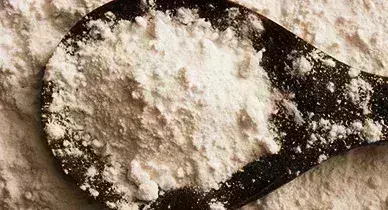- Home
- Medical news & Guidelines
- Anesthesiology
- Cardiology and CTVS
- Critical Care
- Dentistry
- Dermatology
- Diabetes and Endocrinology
- ENT
- Gastroenterology
- Medicine
- Nephrology
- Neurology
- Obstretics-Gynaecology
- Oncology
- Ophthalmology
- Orthopaedics
- Pediatrics-Neonatology
- Psychiatry
- Pulmonology
- Radiology
- Surgery
- Urology
- Laboratory Medicine
- Diet
- Nursing
- Paramedical
- Physiotherapy
- Health news
- Fact Check
- Bone Health Fact Check
- Brain Health Fact Check
- Cancer Related Fact Check
- Child Care Fact Check
- Dental and oral health fact check
- Diabetes and metabolic health fact check
- Diet and Nutrition Fact Check
- Eye and ENT Care Fact Check
- Fitness fact check
- Gut health fact check
- Heart health fact check
- Kidney health fact check
- Medical education fact check
- Men's health fact check
- Respiratory fact check
- Skin and hair care fact check
- Vaccine and Immunization fact check
- Women's health fact check
- AYUSH
- State News
- Andaman and Nicobar Islands
- Andhra Pradesh
- Arunachal Pradesh
- Assam
- Bihar
- Chandigarh
- Chattisgarh
- Dadra and Nagar Haveli
- Daman and Diu
- Delhi
- Goa
- Gujarat
- Haryana
- Himachal Pradesh
- Jammu & Kashmir
- Jharkhand
- Karnataka
- Kerala
- Ladakh
- Lakshadweep
- Madhya Pradesh
- Maharashtra
- Manipur
- Meghalaya
- Mizoram
- Nagaland
- Odisha
- Puducherry
- Punjab
- Rajasthan
- Sikkim
- Tamil Nadu
- Telangana
- Tripura
- Uttar Pradesh
- Uttrakhand
- West Bengal
- Medical Education
- Industry
Diode Laser and Gas Ozone equally effective for treatment of Dentin Hypersensitivity

In a groundbreaking exploration, a recent study has delved into the realm of dentin hypersensitivity (DHS), evaluating the clinical efficacy of two innovative treatments – diode laser and gas ozone. This research, aimed at enhancing our understanding of effective DHS management, brings forth promising results that could reshape dental care practices. The study concluded that Diode laser and gas ozone demonstrated efficacy in treating dentin hypersensitivity with ozone maintaining consistent effectiveness even after 6 months.
The study results were published in the Journal of Endodontics.
The study, conducted on 44 patients with 132 teeth exhibiting moderate DHS, employed a split-mouth design to randomize the teeth into three groups. The diode laser group received targeted irradiation using an 808-wavelength diode laser with an incremental power from 0,2 to 0,6 W, with 20 seconds of interval, while the gas ozone group underwent a high-dose ozone application via a silicon cup. The placebo group, serving as a control, received no therapeutic intervention. Dentin sensitivity was meticulously assessed at various intervals – immediately post-treatment, after 3 months, and after 6 months – using cold air blast challenges and tactile stimuli. Pain severity was quantified through the Visual Analogue Scale (VAS).
Results:
- Excitingly, both the diode laser and gas ozone groups displayed a noteworthy reduction in DHS levels immediately after treatment, and this positive trend persisted at the 3-month and 6-month marks.
- Of particular interest is the longevity of the gas ozone's effectiveness, with sensitivity values remaining statistically lower than those treated with diode lasers after 6 months (p < 0.05).
- The study's findings bear significant implications for dental practitioners and patients alike.
- Diode lasers and gas ozone emerge as effective therapeutic options for addressing dentin hypersensitivity, offering hope for those grappling with this common dental woe.
- Furthermore, the sustained efficacy of gas ozone presents an intriguing avenue for long-term DHS management.
In conclusion, this comprehensive study underscores the promising efficacy of diode laser and gas ozone in combating dentin hypersensitivity. The sustained impact of gas ozone, even six months post-treatment, introduces an exciting dimension to dental care practices. As the dental community embraces these advancements, patients can look forward to more effective and lasting solutions for dentin hypersensitivity, marking a transformative chapter in oral health care.
Further reading: Ozone and laser effects on dentin hypersensitivity treatment: a randomized clinical study. https://doi.org/10.1016/j.joen.2024.02.007
BDS, MDS
Dr.Niharika Harsha B (BDS,MDS) completed her BDS from Govt Dental College, Hyderabad and MDS from Dr.NTR University of health sciences(Now Kaloji Rao University). She has 4 years of private dental practice and worked for 2 years as Consultant Oral Radiologist at a Dental Imaging Centre in Hyderabad. She worked as Research Assistant and scientific writer in the development of Oral Anti cancer screening device with her seniors. She has a deep intriguing wish in writing highly engaging, captivating and informative medical content for a wider audience. She can be contacted at editorial@medicaldialogues.in.
Dr Kamal Kant Kohli-MBBS, DTCD- a chest specialist with more than 30 years of practice and a flair for writing clinical articles, Dr Kamal Kant Kohli joined Medical Dialogues as a Chief Editor of Medical News. Besides writing articles, as an editor, he proofreads and verifies all the medical content published on Medical Dialogues including those coming from journals, studies,medical conferences,guidelines etc. Email: drkohli@medicaldialogues.in. Contact no. 011-43720751




